Marble Tile Source
Marble tile has a reputation of being one of the most luxurious home design materials and its attractive veining and color options can truly make it stand out in any room. Marble tile flooring makes a ... Read More
Marble Tile Source
Marble tile has a reputation of being one of the most luxurious home design materials and its attractive veining and color options can truly make it stand out in any room. Marble tile flooring makes a ... Read More
Marble is found across the globe including Belgium, France, Great Britain, Greece, Italy, Turkey, Spain, China, and throughout North America. Marble has been used for thousands of years in the construction of temples, monuments and buildings, and for fine sculptures and relief carvings.
Today, marble is still used for fine works of art and construction, but is now also used as flooring, accent walls and countertops in homes across the world. Over the last century, quarrying marble has been made significantly easier, with vast improvements coming in just the last 20 years.
It takes a lot of skill, the proper equipment, and patience to get marble from the ground, and into your home. Here is just a glimpse of what it takes.
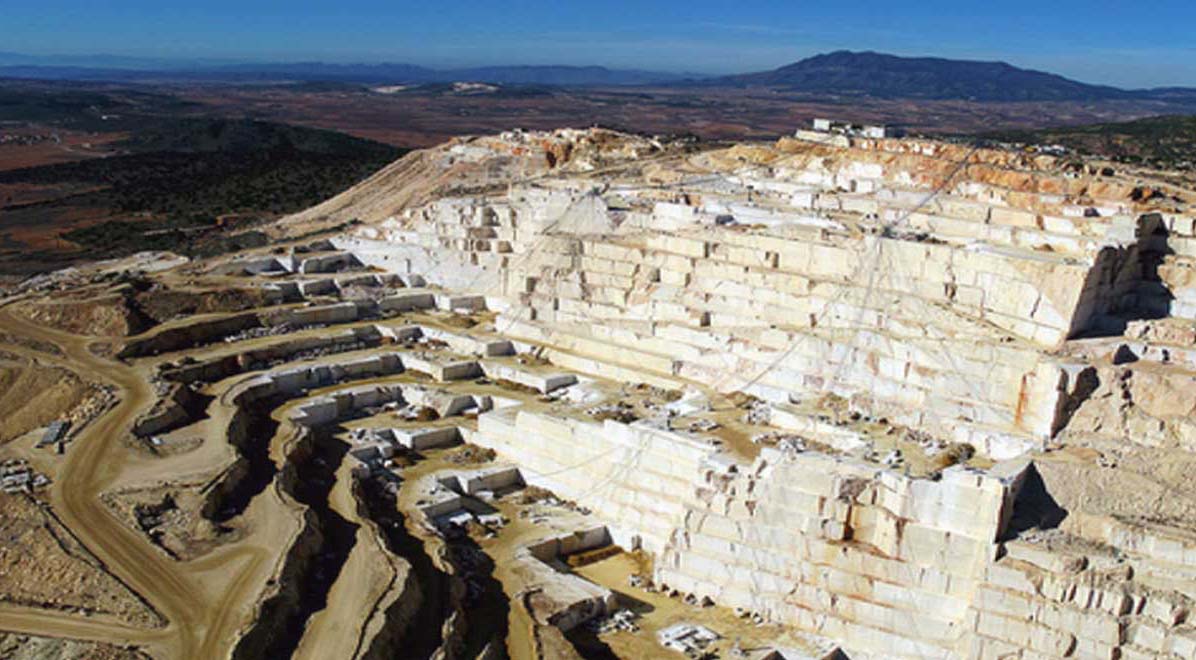
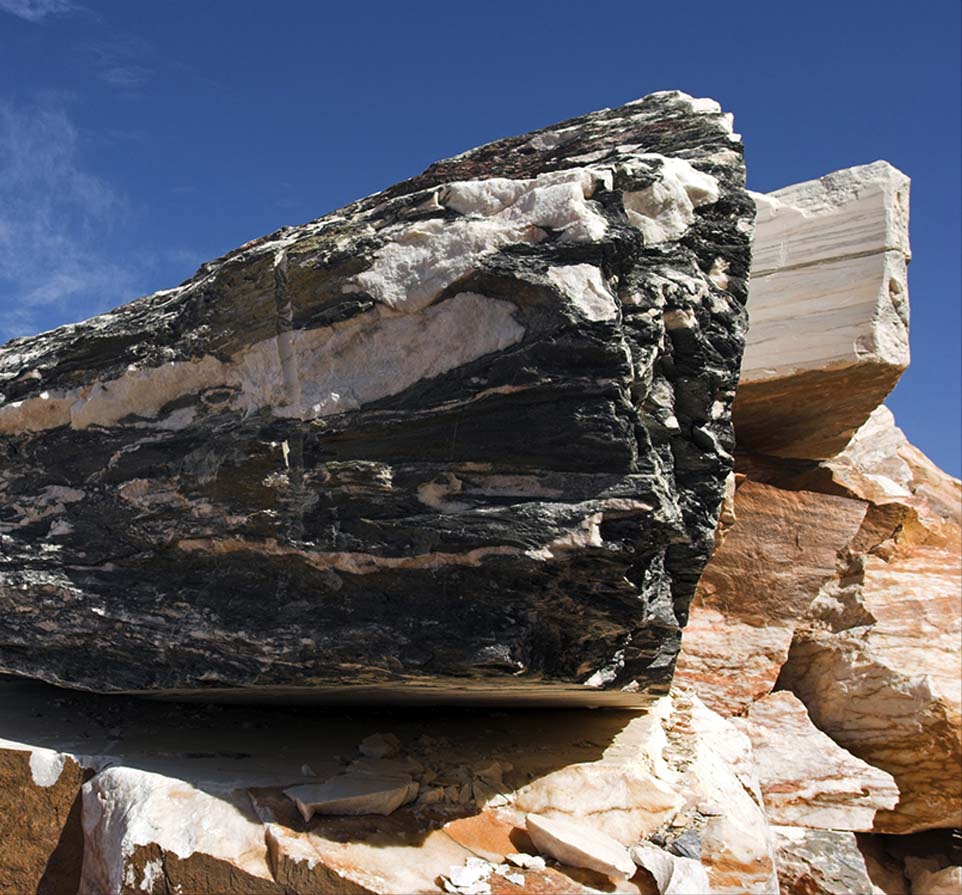
Geologists find the most desirable marble deposits by drilling down into the bedrock and removing a sample. The sample is tested for strength, and polished to determine color and pattern. If the sample is deemed strong, and valuable on the market, clearing of dirt, and plants is required. This may take several months of hard work prior to a single slab of marble being removed.
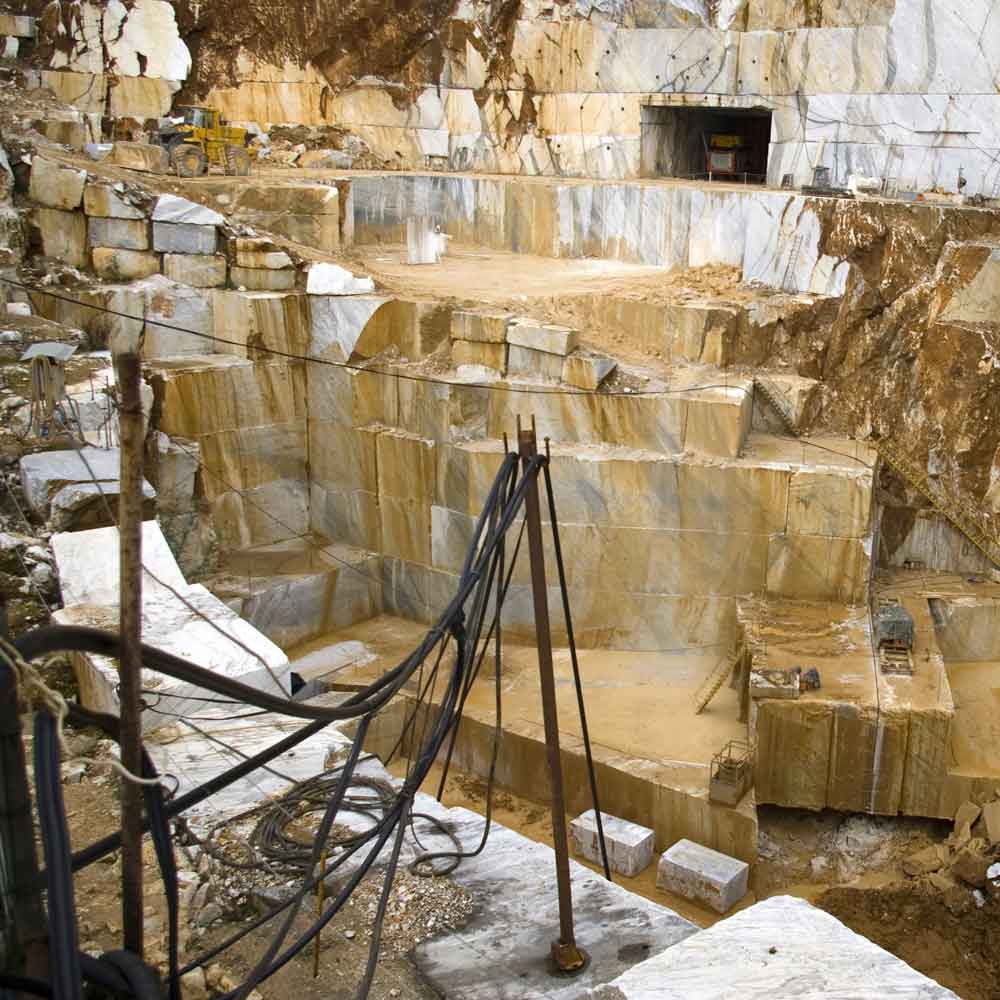
Next, special equipment to score and cut the marble is brought to the site. Holes are drilled into the mountain to allow the running of diamond wire cables from one point to another. These cables are then fed, much like a bicycle chain, wearing the marble down, until a block of marble is detached from the surrounding marble.
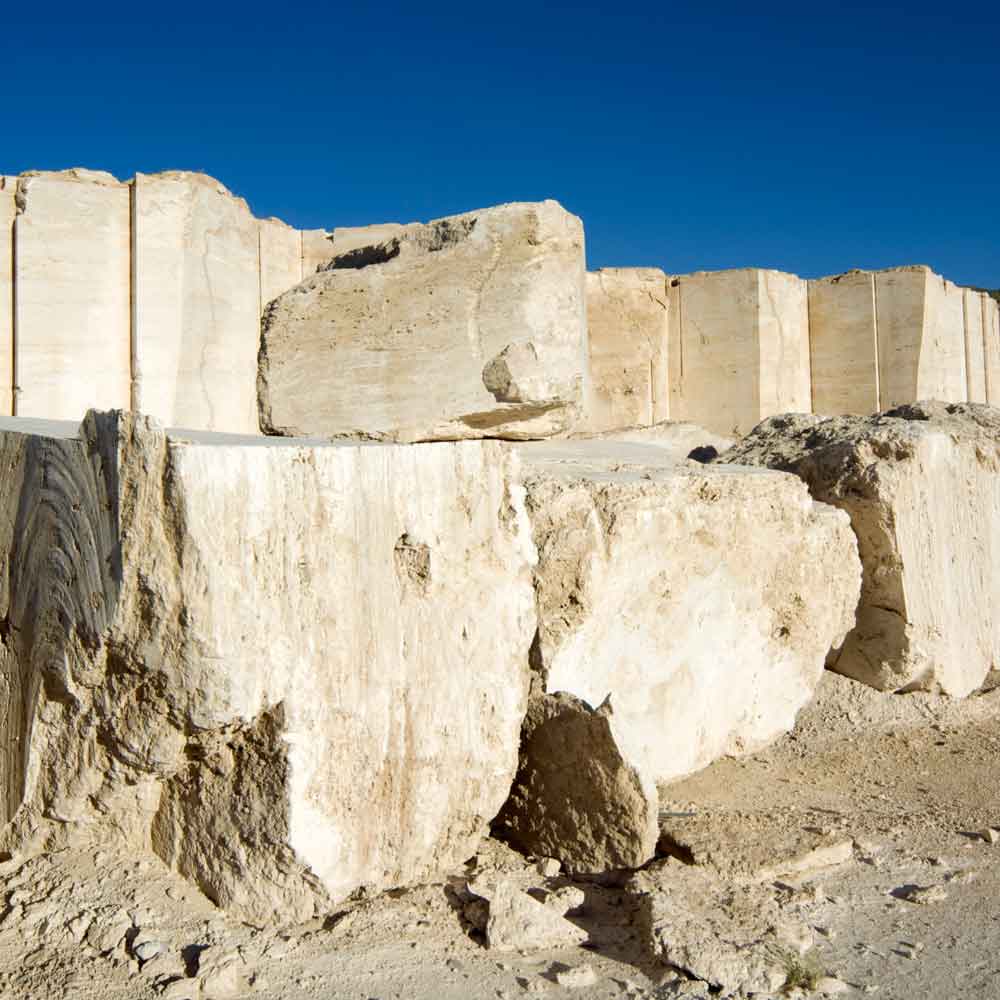
This large block is now ready to be further cut down into smaller blocks allowing for transportation. Heavy cranes lift these smaller blocks onto trucks for transportation to the cutting site.
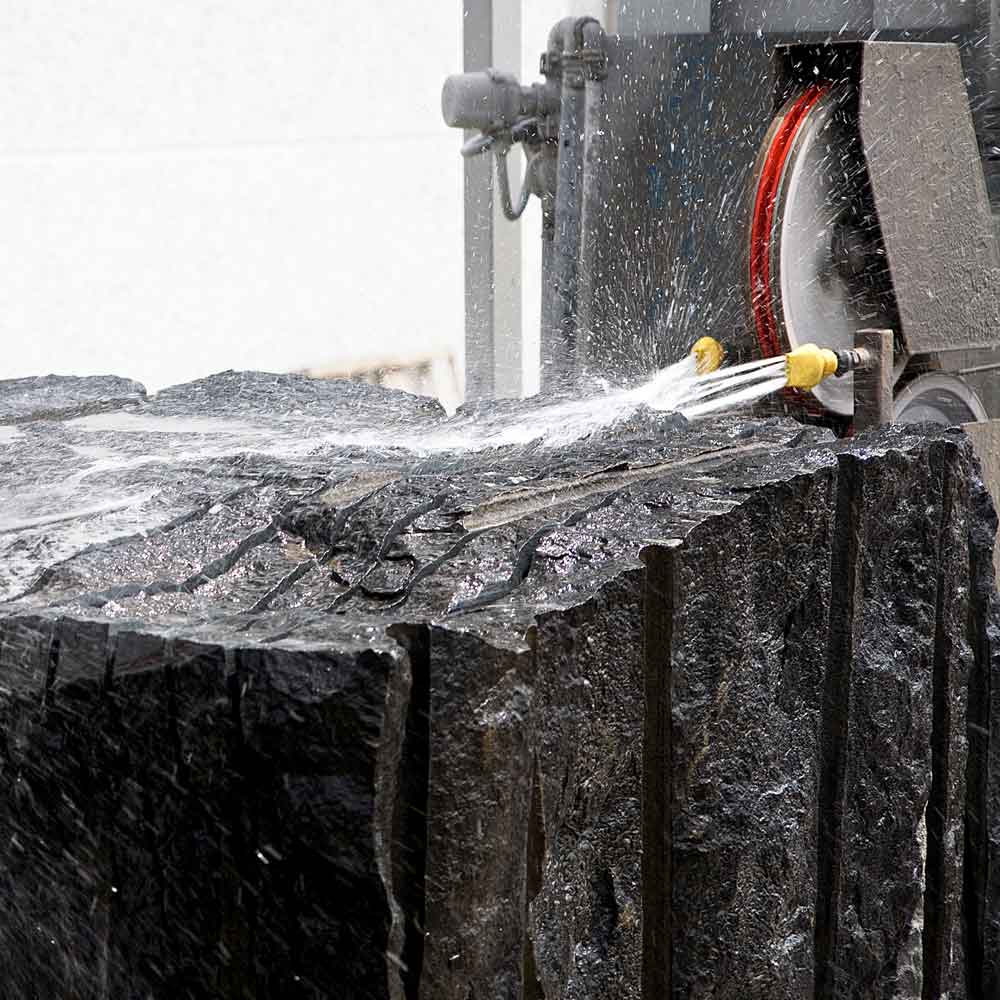
Once onsite, a gang saw with adjustable blades, is used to slice the blocks into slabs. It works much like a bread slicer, just on a much larger scale. Some gang saws are capable of slicing marble blocks into slabs as wel as strips of marble for tiles.
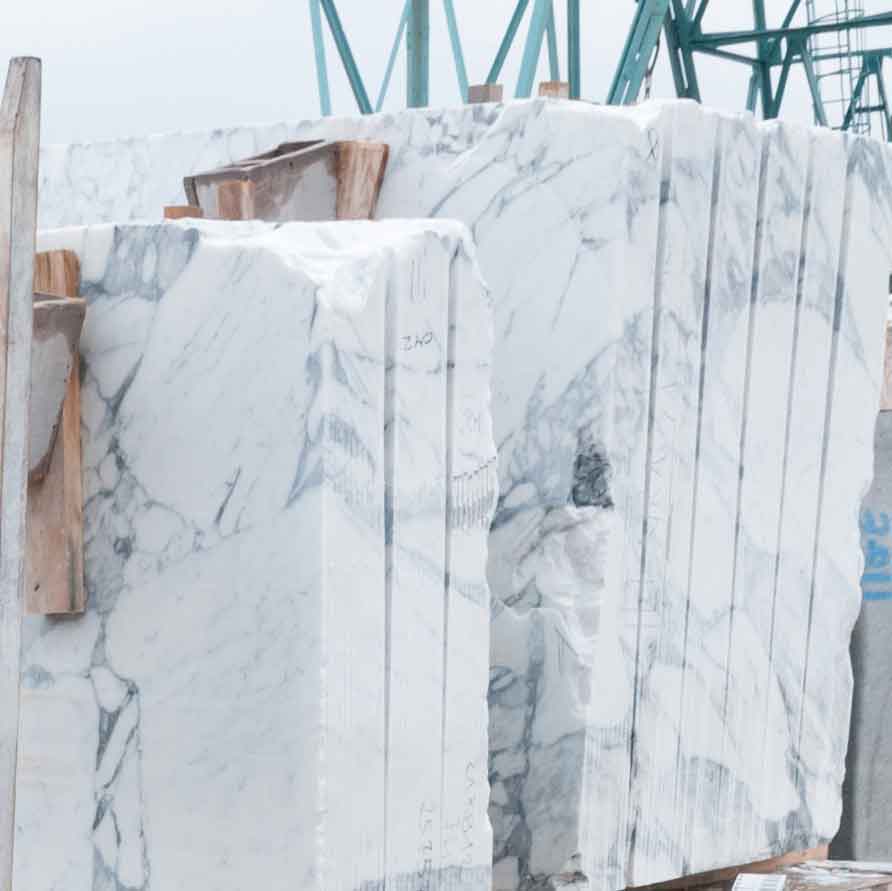
Now, the slabs or strips of marble are ready for polishing. A large conveyer system moves them through the polishing line. The process typically starts with very coarse diamond abrasives, and moves gradually to finer and finer abrasives – a process similar to sanding fine hardwoods.
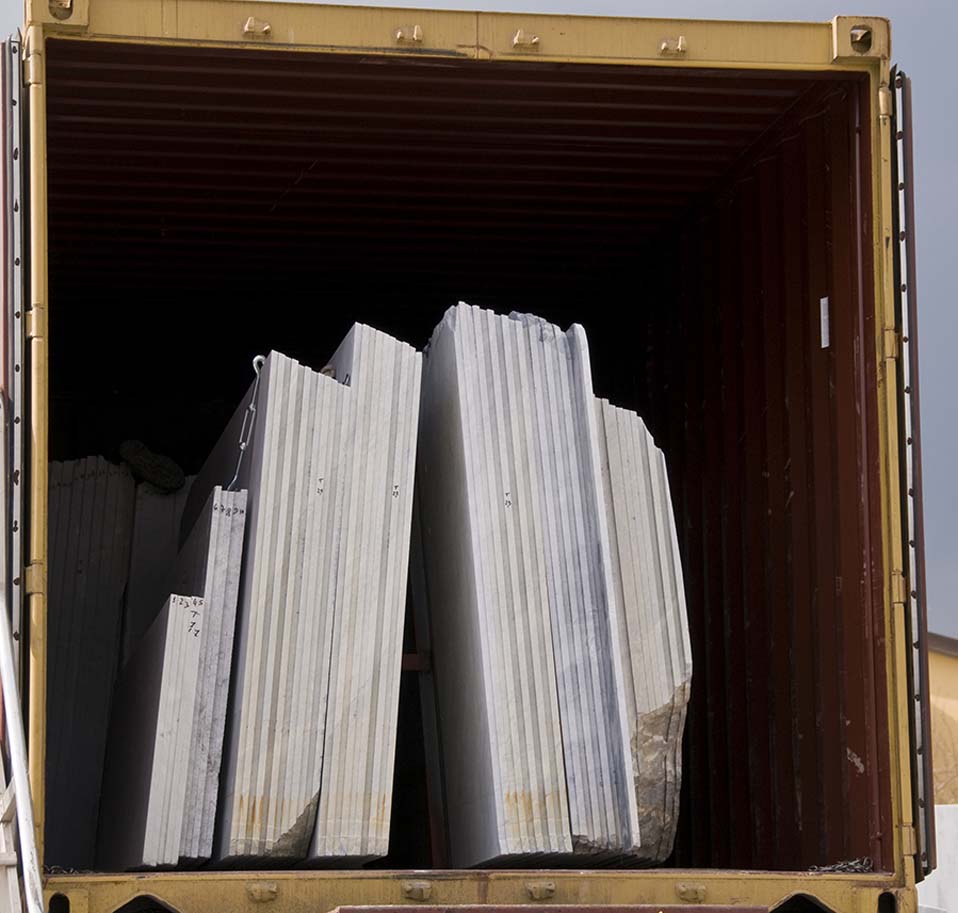
Once the natural beauty of the marble has been revealed in the polishing line, it is ready for quality assurance testing and packaging before starting its trip to the distribution facility. When coming from overseas, 20-foot shipping containers are used, and the weight of each container is limited to 20 tons.
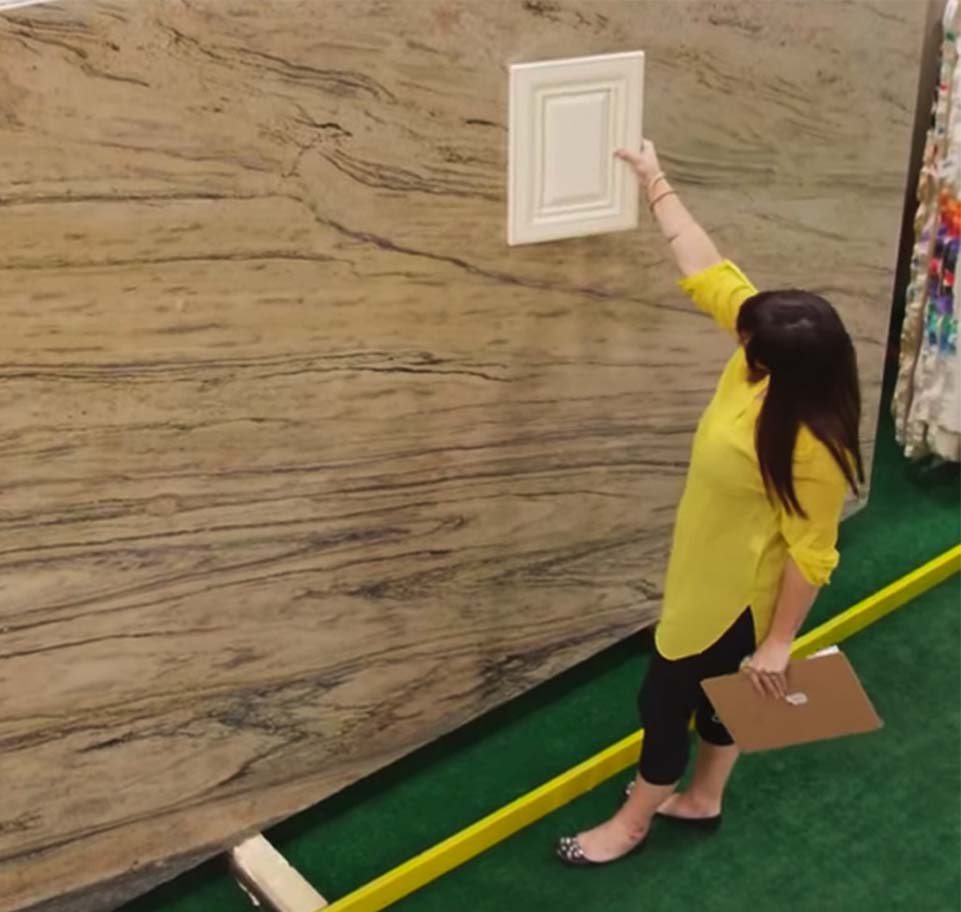
After the marble arrives at a distribution facility/warehouse, customers can view the slabs to select the one with the color and veining desired. This is highly recommended, as each slab of marble will have its own unique characteristics.
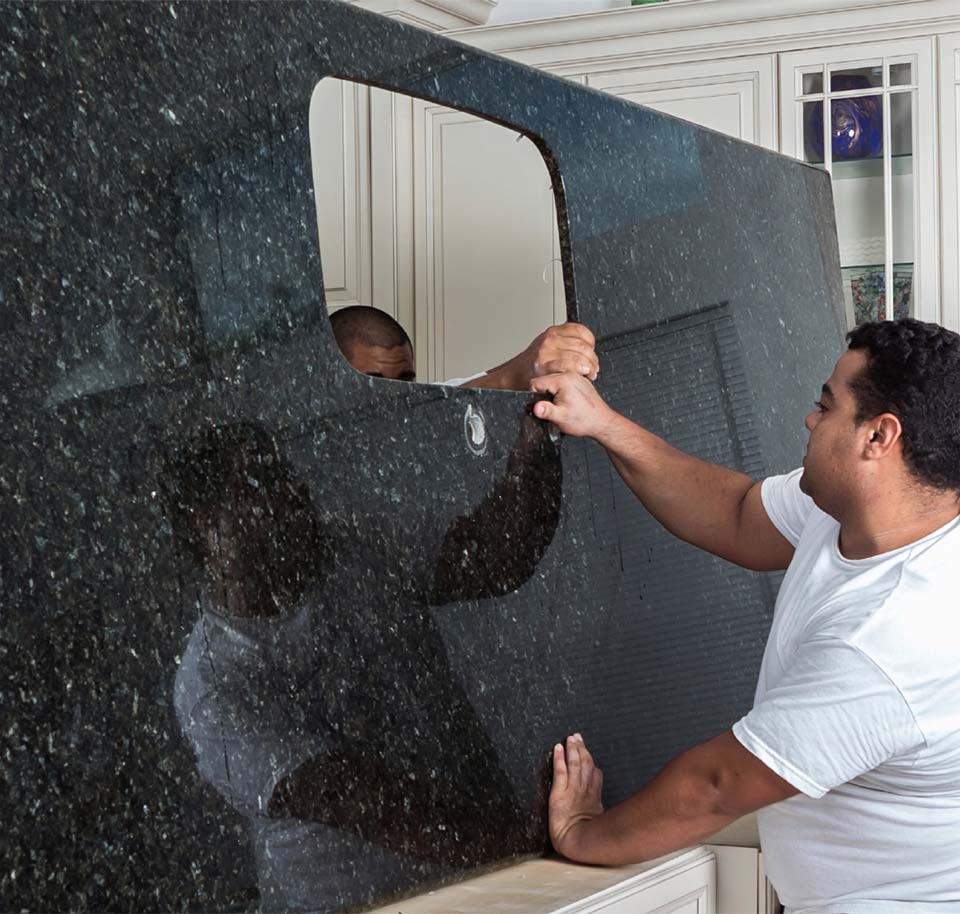
After selecting the slab or slabs of marble desired, natural stone installers will measure the area in the home, to exacting standards, and start the fabrication process. Once complete, the marble slabs will be carefully transported and installed.